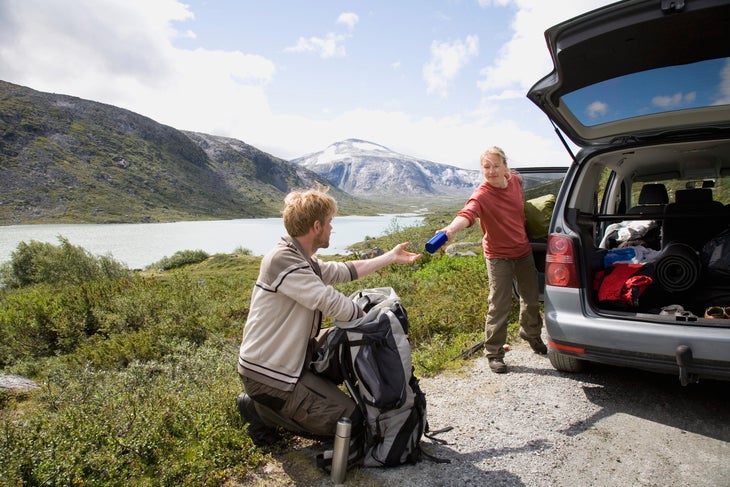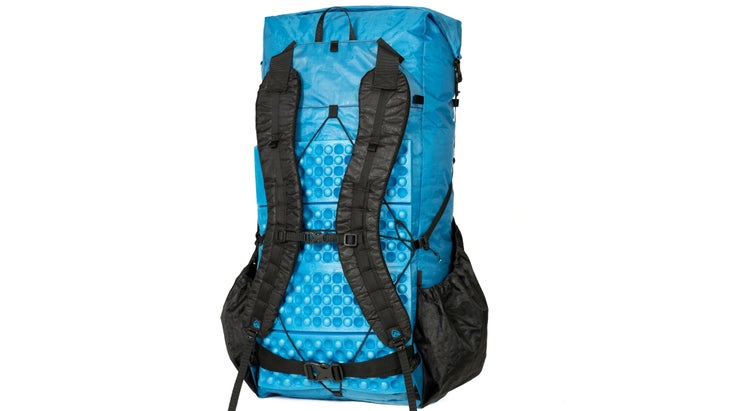Products You May Like
You’ve carefully whittled down your base weight, sacrificing everything from extra socks to your trusty camp chair. It’s official—you’re an ultralighter now. Your reward? A new backpack to carry your scant belongings, complete with a flimsy hipbelt and a suspension system that’s missing entirely. Jokes aside, a frameless pack like the Gossamer Gear Kumo or Zpacks Nero can further your weight savings by a pound or more, allow greater freedom of movement. If packed correctly, they can even be more comfortable than a stiffer pack. But learning to pack one of these specialized rucksacks can be a challenge. Here are a few tips and tricks to make your transition to a lighter backpack as painless as possible.
Keep Your Load Light
While there are plenty of tips and tricks to help you make a frameless pack more comfortable, none of them can change the simple fact that this style of backpack isn’t designed to carry heavy loads. Not only are they without frames, which, on a typical backpack, range from aluminum stays to large plastic backpanels, but they also lack the stiff, padded hipbelts that connect to the frame and transfer weight to your hips. On a frameless pack, a hipbelt mostly keeps your pack from shifting while you’re in motion (some models have no hipbelt at all). Ideally, you should be working with a 10- or 11-pound base weight and a 20- to 22-pound total pack weight. More than that, and your shoulders will pay the price.

Pack With Purpose
When it comes down to it, a frameless pack is little more than an oversized stuff sack with straps. Thanks to this minimal construction, you’re more likely to notice if your pack is bulging or misshapen, and a poorly placed cooking pot could be a literal pain in your back. A good rule of thumb is to pack soft goods, like your sleeping bag and extra clothes, against your back. Stoves, fuel canisters, and other hard-sided gear should be tucked away where they won’t bother you—in the far side of the main compartment or an external pocket. (Don’t pack anything heavy too far from your back, though.)
Create Your Own Pack Frame
Since a frameless pack has no built-in support, creating some structure with a few items you’ll be carrying anyway can make them a lot more comfortable. This will prevent the pack from sagging and reduce the strain on your shoulders. The most common method is to use a closed-cell foam pad, rolled loosely in a cylinder. This creates a makeshift frame and leaves room for the rest of your gear to be packed inside the pad. This can work with an inflatable pad, as well—just inflate it partially, since there’s no chance it will fit inside the pack fully inflated. Other options include folding your pad to form a backrest inside your pack, or using tent poles as a suspension system by orienting them vertically in your pack, in the corners that will sit against your back.

Get Physical
With a traditional backpack that utilizes a stiff framesheet, there’s not much you can do to change its shape and make it conform to your body. Not so with a frameless backpack. Thanks to its malleable nature, a frameless pack will likely bulge out right after you’ve packed it, but it can be coerced back into a more ergonomic shape. Massaging, pushing, or punching your pack into the right shape, especially near the bottom where it will contact the small of your back, is a rite of passage for any ultralighter.
Don’t Force the Issue
A svelte, frameless pack may feel like an obligatory final step while building an ultralight kit, but it doesn’t have to be. For starters, frameless packs are designed to carry pack weight on your shoulders, and that simply might not appeal to you no matter how light your gear is. It could also be a non-starter if your preference is for long trips, due to the amount of food and water you need to carry. It’s also worth considering just how unobtrusive an internal frame can be—a few carbon fiber stays can weigh just a few ounces but make all the difference at the end of a long day on the trail. Ultralight hiking is all about comfort, after all, and if switching to a frameless pack is going to give you grief, there’s no reason to do it.
